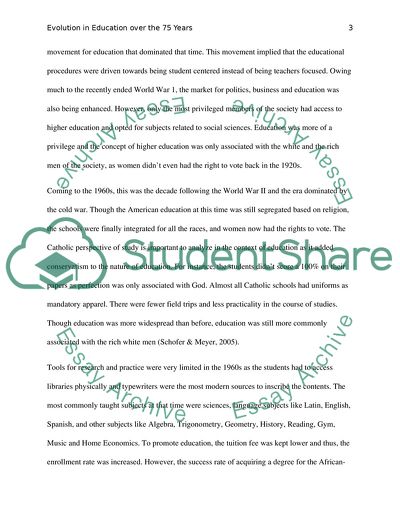Cite this document
(Evolution in Education over the 75 Years Report Example | Topics and Well Written Essays - 1500 words, n.d.)
Evolution in Education over the 75 Years Report Example | Topics and Well Written Essays - 1500 words. https://studentshare.org/sociology/1771394-how-has-education-changed-over-the-past-75-years-in-terms-of-subjecgts-taught-discipineand-college-expectations
Evolution in Education over the 75 Years Report Example | Topics and Well Written Essays - 1500 words. https://studentshare.org/sociology/1771394-how-has-education-changed-over-the-past-75-years-in-terms-of-subjecgts-taught-discipineand-college-expectations
(Evolution in Education over the 75 Years Report Example | Topics and Well Written Essays - 1500 Words)
Evolution in Education over the 75 Years Report Example | Topics and Well Written Essays - 1500 Words. https://studentshare.org/sociology/1771394-how-has-education-changed-over-the-past-75-years-in-terms-of-subjecgts-taught-discipineand-college-expectations.
Evolution in Education over the 75 Years Report Example | Topics and Well Written Essays - 1500 Words. https://studentshare.org/sociology/1771394-how-has-education-changed-over-the-past-75-years-in-terms-of-subjecgts-taught-discipineand-college-expectations.
“Evolution in Education over the 75 Years Report Example | Topics and Well Written Essays - 1500 Words”. https://studentshare.org/sociology/1771394-how-has-education-changed-over-the-past-75-years-in-terms-of-subjecgts-taught-discipineand-college-expectations.


